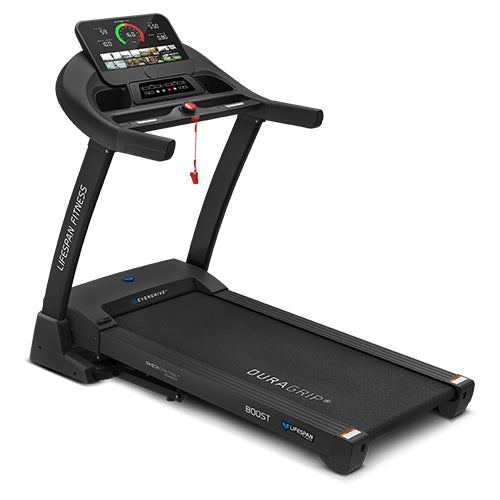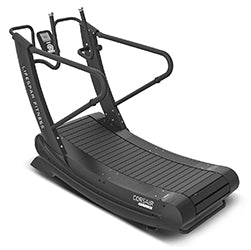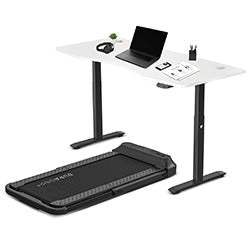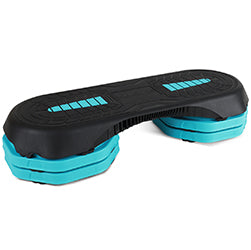

If you're starting off your weight lifting journey you may be unaware of the features that vary across different barbells. Although most barbells look very similar, they each incorporate a unique design with specific characteristics that will differentiate between performance and purpose. Barbells are a great way to elevate your workout regime and incorporate compound lifts to build muscle. Barbells are found at most gyms and is popular amongst gym-goers of any strength level. If you are a beginner, some common and simple compound lifts you could try out with a barbell is a dead lift, barbell squat, bench press or overhead press. Barbells are a versatile piece of weight training equipment that comes hand in hand with weight plates, which will allow you to easily make small weight increments to accommodate growing strength.
Olympic barbells are designed to competitive standards, meaning they will perform better for powerlifting as they’re designed to hold a heavier load and support rotational bar movements. However, Olympic barbells are not all the same, they come in different grades and cannot all be used for competitive lifting. Entry level bars with a chrome finish and lower tensile strength are a great starting point for beginners and preforming functional exercises. Once confidence is developed and you want to take your lifting up a notch you can progress into a commercial grade bar where you will see stronger components and higher quality materials that will support heavier weights. Before you pick a barbell, it is important to consider where you are at in your weight lifting journey and what barbell will work best with you.

Size & Weight
Olympic barbells are structured to meet competition standards and slightly vary in size between men and women. Men's bars are 20kg and 220cm, you will typically find this size at your local gym, yet most manufacturers produce a women's bar which is typically 15kg and 200cm long while. The difference in length is proportionate with male and female shoulder width, whereby men's shoulders tend to be further apart compared to women. A lighter bar has been designed for lifters starting at a lower weight, which can be upgraded as the user adds more weight. The shaft size is also smaller in women's barbells to accommodate for smaller hands so women can maintain a strong grip while preforming lifts.
Steel
Just about every barbell you come across will be engineered with some type of steel. Carbon steel barbells are a high strength barbell, a good option for those looking for a low-cost barbell as carbon steel is frequently used in cheaper barbells on the market. A stronger option is chromoly steel, which is a type of low-alloy steel that is often used when high strength is needed as chromoly will increase the steels hardenability and resistance to corrosion. For competition use, a spring steel bar will protect your bar from bending as spring steel has a great whip and will bend back into shape when put under heavy load.

Tensile Strength
When looking at barbell strength you will need to consider the tensile strength to understand the breaking point of the barbell. A durable and higher quality barbell will have a higher tensile strength, meaning it is less prone to breaking. The tensile strength is rated in pounds per square inch (PSI), as a guide 165,000 PSI is a good minimum and higher end barbells will have either a 190,000 or 215,000 PSI.
Finishes
Coatings are applied to the steel for protection and to reduce oxidation. Hard chrome tends to be the most sought-after finish as it retains its shine, doesn’t chip or rust and is the strongest finish. For a natural feel, black oxide will be your best option, it is also preferred by powerlifters for its ‘tacky’ grip. A zinc finish is also preferred for its gripping as the coating has a chalky feel. Lifters choose to go for a chrome-plated bar for the look and feel of a bright silver coating, however this coating isn’t designed to last and will crack and chip over time. For an entry level barbell, a bare steel is cost friendly, but it has a limited protective finish and will rust over time.

Knurling Position
Knurling is simply the cross-hatched pattern seen on a barbell shaft, it can be extremely rough or smooth depending on the barbell. Knurl is very important for grip and friction; light knurling will make the bar more difficult to hold especially as your hands sweat. Knurling preference is subjective, but as a guide, medium knurls work best for compound lifts, CrossFit and functional training. A more aggressive knurl is recommended for Powerlifting or Olympic Weight lifting to help maintain grip during heavy lifts. Centre knurling is designed into Olympic barbells to maintain grip on your back or shoulders while lifting in front rack position or on shoulders.
Bearings & Bushes
Bearing mechanisms sit inside the barbell to reduce friction during spinning. Olympic weightlifting barbells will include more bearings for faster rotation and a smoother spin. In terms of bearings, there are a few different types, needle bearings are used in Olympic barbells as they allow weight plates to spin freely. Bushings, on the other hand are lubricated metal rings that are found in majority of standard barbells designed for functional fitness training. Bushings are generally cheaper than bearing and don't perform as well, you won't get the same smooth spin you would typically get from bearings.
Maintenance
To help your barbell last to its maximum potential, it will require regular cleaning and maintenance. After every workout, it is recommended to wipe down the bar with a dedicated fitness wipe or even with a microfiber cloth, to reduce build-up of dirt and sweat in the knurling. Another effective tool for cleaning in between knurls is a nylon bristle brush, which will work great to leave the bar undamaged. Regular maintenance will also include lubricating the sleeves with oil as to leave behind a protective coating which will help prevent future problems.
Summary
Barbells are a great resource for building strength and muscle while completing a variety of different exercises targeting the entire body. Although a barbell is simple to look at, there is a lot that goes into the engineering and structure in order to optimise training performance. If you are new to lifting, you have a few things to consider to ensure you are using a barbell safely and one that best suits you
Shop Our Barbell Range Here

















































